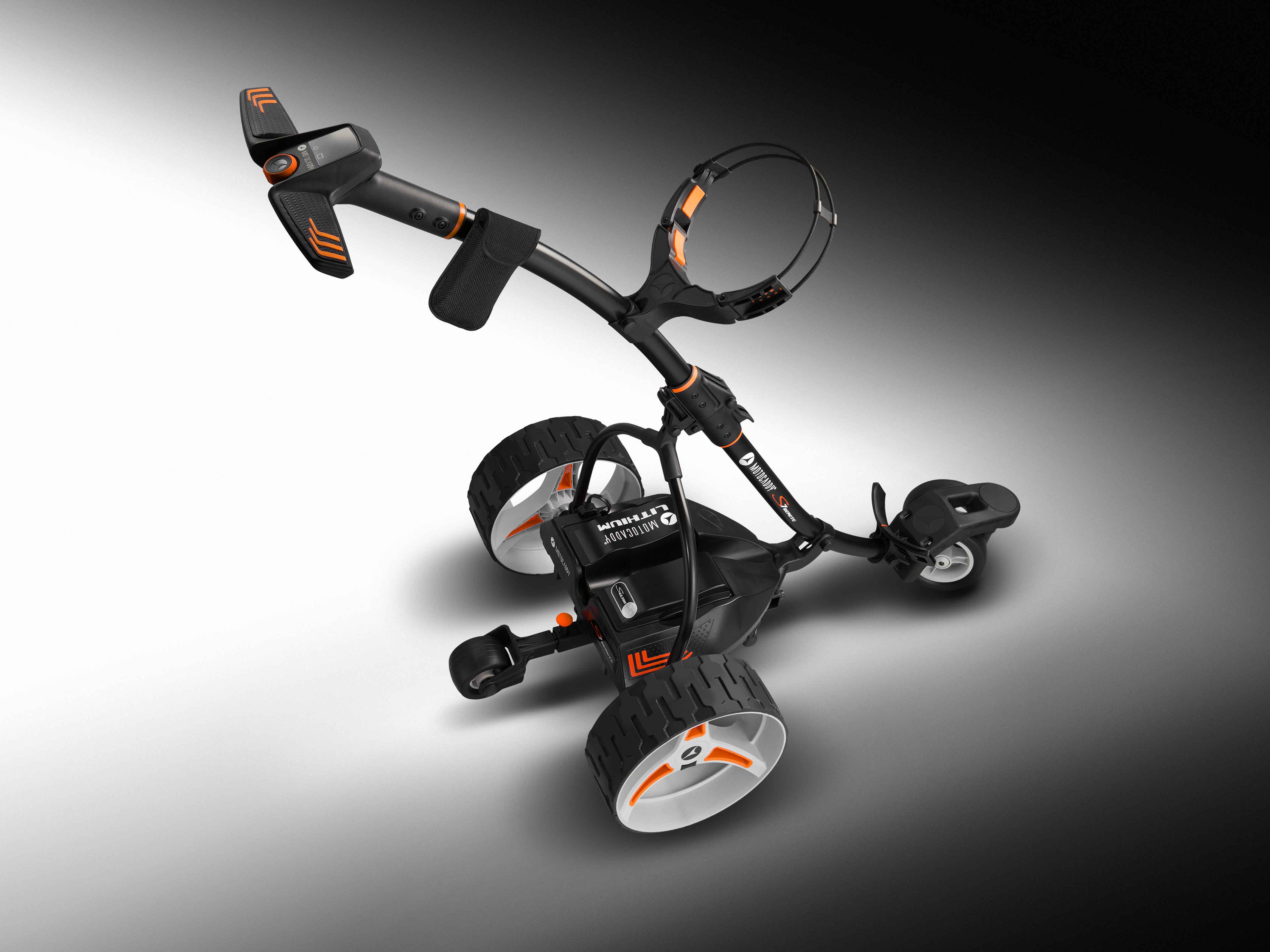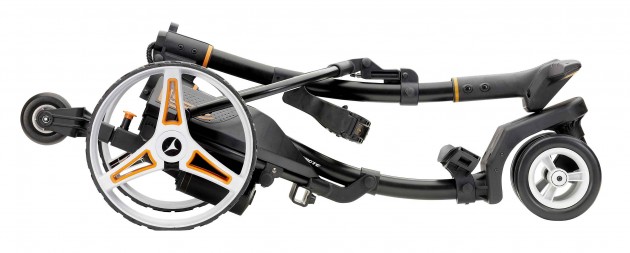Motocaddy S7 Remote trolley review
Golf Monthly review the new Motocaddy S7 Remote electric trolley

Overall, the Motocaddy S7 Remote was a joy to use. It’s quick and easy to put together and the concept takes little time to grasp, soon becoming second nature. I found it useful in a multitude of situations, mostly looking for balls in the rough, saving valuable time. If you love gadgets and being the talk of your fourball, the S7 Remote is well worth a try.
-
+
Simple to use, useful functions help maintain better control of the trolley hands free. Quick to assemble and remote navigation saves time in various situations.
-
-
The wider wheels with deeper tread make manual control slightly trickier than a conventional electric trolley.
Why you can trust Golf Monthly

Golf Monthly's Motocaddy S7 Remote trolley review, the brand's first handset-controlled electric trolley packed full of innovative features to make navigation easier and more fun
Spec tested 18-hole lithium battery, black frame (also comes in Alpine)
Motocaddy S7 Remote trolley review
Styling New for this year on the S7 trolley is the orange trim, which definitely enhances the style. This also features on the Remote, which itself has a premium look and fits perfectly in your hand. The shape of the S-Series frame creates a modern but sturdy look and while the wider wheels with deeper tread look more industrial, they serve the purpose well without being an eyesore.
Battery Only the 18-hole lithium battery is available on the S7 Remote model but from a full charge and testing out all the features, there was plenty of battery life remaining after 18 holes. I’d be confident you could do 27 holes if the course is relatively flat.
Handset Larger but thinner than existing Remote trolleys, it’s clear a lot of thought has gone into the design. The dual pressure left and right buttons genuinely enhance the steering aspect, correcting for any slight veering subtly but effectively. The reverse or ‘down’ button seemed more sensitive than the others, requiring a firm touch rather than an actual push.
Frame Just as easy and quick to put together as other S-Series electric trolleys thanks to the Quickfold mechanism. Simply lift and click then lower the bag support and you’re ready to load up. The inclusion of the Easilock base makes the process even more of a breeze and saves any golfers with ailing backs. The inclusion of the Anti-Tip wheel keeps the trolley upright when accelerating quickly.

Operation Using the remote to steer was fun to use and quick to grasp. But to also have the option of switching to manual mode is a real benefit if you lose the remote, it runs out of battery or you just fancy going back to using the trolley in the conventional way for a short time.
Steering When walking closely behind the S7, it’s tough to fight the urge to steer like you do a conventional electric trolley by pushing the handle if you're a trolley user. The extra tread and width on the wheels makes this a little more difficult to do when in manual mode. Being able to do soft and sharp turns certainly makes the trolley easier to navigate.
Features I particularly enjoyed the Tilt function, which compensates for lateral slopes. You can set it on before you tee off and then be reassured that when you do encounter a sidehill, the trolley will track much straighter and you haven’t got to keep adjusting its direction as you travel to your next shot. The downhill control feature is also a big plus, maintaining a constant speed down slopes rather than getting away from you or pulling you like conventional electric trolleys.
Ease of use The overall experience wasn’t as cumbersome as I expected and if anything it enhanced my pace of play. Having a Velcro pouch that houses the handset clipped to the frame is a must for me as I’m not a golfer that likes too many items in my pockets when I play. But having it in my back pocket on the green, having steered it toward the next tee, didn’t take much getting used to.
Control Very limited issues in terms of control, down to the remote but also the 360° self-righting front wheel that wants to revert to straight as quickly as possible. The pause and resume function means that the trolley returns to your walking pace automatically, another welcome feature.
Get the Golf Monthly Newsletter
Subscribe to the Golf Monthly newsletter to stay up to date with all the latest tour news, equipment news, reviews, head-to-heads and buyer’s guides from our team of experienced experts.

Joel has worked in the golf industry for over 15 years covering both instruction and more recently equipment. He now oversees all equipment and video content at Golf Monthly, managing a team of talented and passionate writers and presenters in delivering the most thorough and accurate reviews, buying advice, comparisons and deals to help the reader or viewer find exactly what they are looking for.
One of his career highlights came when covering the 2012 Masters he got to play the sacred Augusta National course on the Monday after the tournament concluded, shooting a respectable 86 with just one par and four birdies. To date, his best ever round of golf is a 5-under 67 back in 2011. He currently plays his golf at Burghley Park Golf Club in Stamford, Lincs, with a handicap index of 3.1.
Joel's current What's In The Bag?
Driver: Titleist GT3, 9°, Fujikura Ventus Black 6 S shaft.
Fairway wood: Titleist TSR3, 15°
Hybrid: Titleist TSi2, 18°
Irons: Titleist T150, 4-PW
Wedges: Titleist Vokey SM10, 50°, 54° and 58°
Putter: LAB Golf DF3
Ball: 2025 Titleist Pro V1x
-
 Chevron Championship Tee Times: Rounds One And Two
Chevron Championship Tee Times: Rounds One And TwoA look at when the players are teeing it up in the opening two rounds of the Chevron Championship - the first women's Major of the year
By Mike Hall Published
-
 Charley Hull Social Media Video Reveals Brutal Weather Conditions Ahead Of Chevron Championship
Charley Hull Social Media Video Reveals Brutal Weather Conditions Ahead Of Chevron ChampionshipCharley Hull has added a video to her Instagram stories showing strong wind and heavy rain in Texas ahead of the first women's Major of the year
By Mike Hall Published
-
 How To Watch Chevron Championship 2025: Live Streams, TV Channels, Schedule
How To Watch Chevron Championship 2025: Live Streams, TV Channels, ScheduleAll the details on how to watch Chevron Championship online and on TV from anywhere, as the first women's Major of 2025 takes place at Carlton Woods this week.
By Roderick Easdale Published